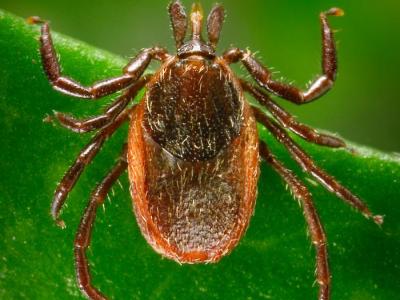CDC: Suspected acute flaccid myelitis cases rise to 155
In an update today, the US Centers for Disease Control and Prevention (CDC) said state and federal health partners are investigating 28 more suspected acute flaccid myelitis (AFM) cases, raising the overall number of patients under investigation to 155.
The number of confirmed cases remained at 62 in 22 states. The latest numbers reflect cases reported to the CDC as of Oct 19. Confirming an AFM requires a review of a patient's clinical syndrome based on a diagnostic algorithm and radiographic findings.
On Oct 16, the CDC announced that health officials are investigating a spike in AFM similar to increases seen in the late summer and fall of 2014 and 2016. Symptoms of AFM, which is still extremely rare, include a polio-like sudden onset of limb weakness and decreased muscle tone that results from inflammation of gray matter in the spinal cord.
Though a large AFM epidemic occurred in 2014 alongside a national outbreak of severe respiratory illness from enterovirus D68 (EV-D68), testing of patient samples hasn't consistently found a common cause. Last week CDC officials said that, besides infectious diseases, they are looking at other potential causes, such as environmental toxins.
Oct 22 CDC AFM investigation update
Oct 16 CIDRAP News story "CDC, partners probe 127 polio-like cases in 22 states"
New MERS case reported in Riyadh as study details testing protocol
Saudi Arabia’s Ministry of Health (MOH) today reported one new MERS cases for epidemiologic week 42, which was last week.
The patient is a 53-year-old man from Riyadh. The MOH said the man had camel contact, a known risk factor for MERS-CoV (Middle East respiratory syndrome) transmission. He is hospitalized for his infection.
Since 2012, at least 2,263 cases of MERS have been recorded, including 803 fatalities.
In other MERS news, the American Journal of Infection Control published a new study showing the need for at least two nasopharyngeal samples taken at different times to positively identify MERS patients.
The study used data from 408 patients who had positive MERS-CoV test results at a referring hospital in Saudi Arabia. Conversely, two negative nasopharyngeal samples at least 48 hours apart are needed to definitively say a patient does not have MERS, according to the study authors, led by Ziad Memish, MD, one of the first to identify the coronavirus.
Oct 22 MOH report
Oct 20 Am J Infect Control study
Canada, Washington state probe Salmonella cases tied to cucumbers
Cucumbers are suspected in Salmonella illnesses reported from Canada and Washington state, though it's not clear yet if the events are related.
The Public Health Agency of Canada (PHAC) said federal and provincial health officials are investigating 45 lab-confirmed Salmonella Infantis infections in five provinces, most of them in the west: British Colombia, Alberta, Saskatchewan, Manitoba, and Quebec. The patient from Quebec had traveled to British Columbia, which has reported 37 of the cases.
According to an Oct 19 notice, PHAC said the outbreak's source hasn't been identified, but many of the people who got sick reported eating cucumbers before their illnesses began. Symptom-onset dates range from the middle of June through late September, and so far, nine people have been hospitalized. No deaths have been reported.
A food safety investigation by the Canadian Food Inspection Agency is under way, and if contaminated food products are found, it will take further steps, which would include recalling the product. So far, there are no recalls associated with the outbreak.
Meanwhile, the Washington State Department of Health (WSDH) said it is working with state, local, and federal health partners to investigate six Salmonella infections in residents from five counties: King, Snohomish, Thurston, Yakima, and Pierce. The same (unspecified) strain of Salmonella is responsible for all of the illnesses, and the last confirmed patient's symptoms began on Sep 15.
Five of the six people bought and ate English cucumbers from various Costco stores in Washington. According to the WSDH, the cucumbers linked to the infections were sold in three-packs of individually wrapped cucumbers. It urges consumers who bought English cucumbers at Costco between Aug 18 and Sep 10 and still have them in their refrigerators to throw them away.
Oct 19 PHAC notice
Oct 19 WSDH news release












